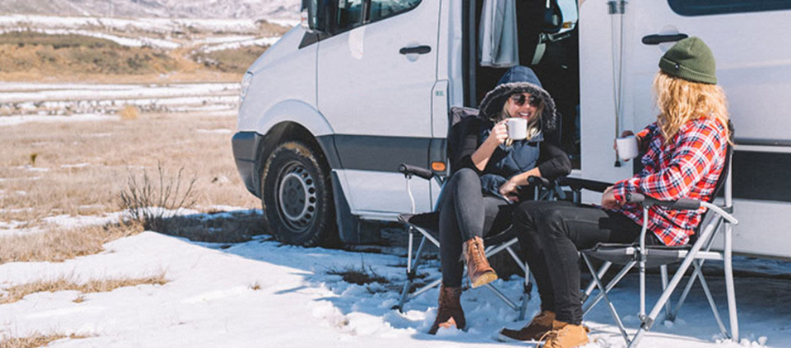
Top Tips to Drive a Motorhome in Winter
Why park your motorhome in the garage and hug the lounge room heater through the cooler months when you could be exploring Australia's alpine regions? Of course, driving in wintry conditions requires some careful preparation. Here are our top tips to ensure you have a safe and super-cool experience.
1. FUELLING YOUR SNOW TRIP
A motorhome is often the only kind of RV allowed to travel to alpine regions and, with an internal heater and several layers of creature comforts, you can be sure to stay nice and toasty during your travels. But being prepared for a winter road trip is more than just packing the thermals and your woolly knee rug.
Most motorhomes are diesel-powered, and the issue is that diesel can get sluggish at low temperatures, which is bad news for your filters and your engine. An alpine diesel or a winter fuel additive in your fuel tank will lower the temperature where diesel starts to thicken and avoid issues. An additive is highly advisable for overnight as well as short stops. Add it to a tank that is less than one-quarter full for the best results.
2. LEARN TO LOVE SNOW CHAINS
In many cases, you'll be required to fit snow chains to your tyres to travel to Australia's alpine regions. There are a few different styles, but the most common are ladder chains and diamond-pattern chains. The latter offers a better grip, so request them when you get yours from a ski hire outlet at the foot of the mountain. You can determine the right size of chain you need for your motorhome by finding the tyre size (printed on the side wall of your tyre) and selecting the correct size from a chain sizing guide at the hire shop.
Fitting them is not a skill you need to exercise too often, so get an expert to show you and then practice a little so you are well prepared. When you have to pop them on, drive forwards 10-20m at about 20km/h so the chain can settle into place. You may need to check the chains and possibly tighten them up. The weather will determine when you need to put them on – and which vehicles do. Often 2WDs will be required to fit chains but AWDs and 4WDs don't.
3. CHOCK-A-BLOCK IN THE SNOW
The snow can not only cause your fingers to freeze if you forget your gloves, but they can also do the same to your handbrake. If you're in a location that is expecting sub-zero temperatures, our advice is to use your park brake instead of the handbrake, or leave the vehicle in gear if your motorhome is a manual, and chock your wheels for extra safety with wheel chocks. You'll need to find suitably-rated, purpose-built and non-slip RV chocks that will handle ice and snow. Chunks of wood won't do the job and many ski resorts won't allow them to be used.
4. DRIVE SAFELY ON ICE
You may be a wonderfully capable motorhome driver on the sun-kissed blacktop, but commandeering your vehicle in slippery, icy conditions is quite another skill altogether.
Avoid using your brakes as much as possible, and, as many modern motorhomes have automated manual transmission, drive your RV in manual rather than automatic so you can use your gears to control your speed. Take it slowly – there's absolutely no rush – and keep your gears very low on your descent so you can control your speed. If worse comes to worst and you need to resort to emergency tactics while slipping down an icy road, your very last plan of attack is to head for a snow bank to stop you from sliding off the mountain. But, with careful planning and a 'don't rush' attitude, spending time in Australia's alpine regions will be a completely chilled-out experience!